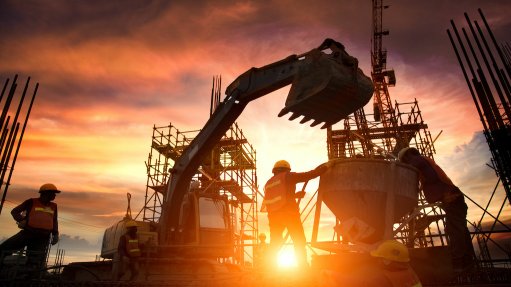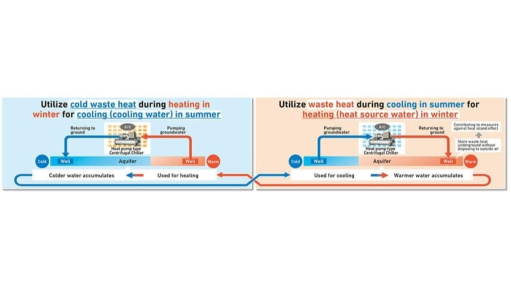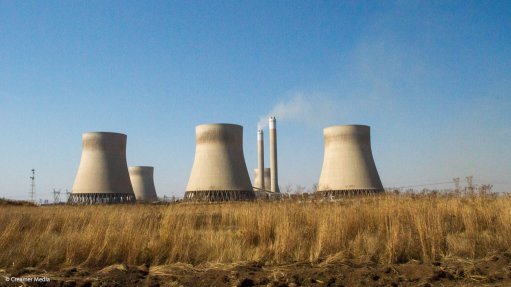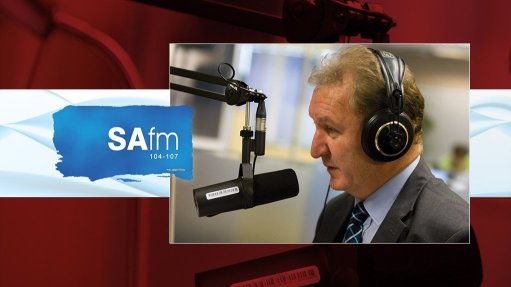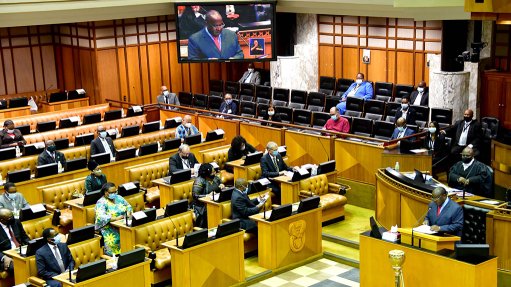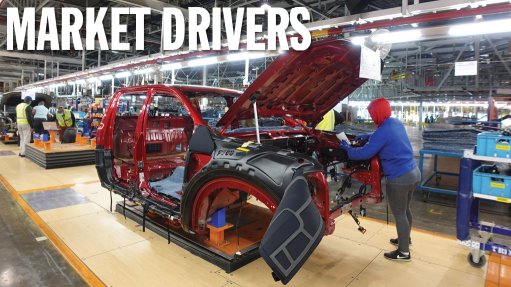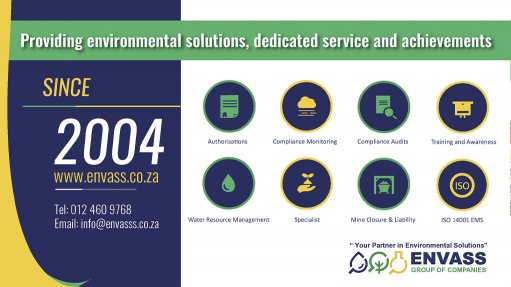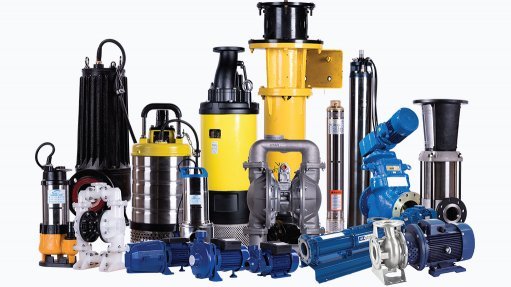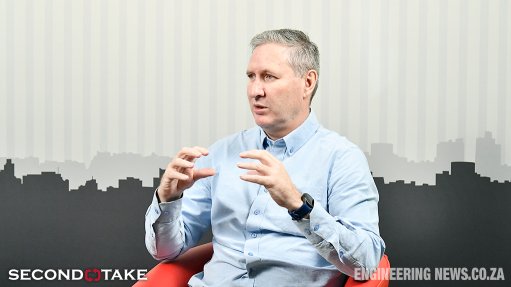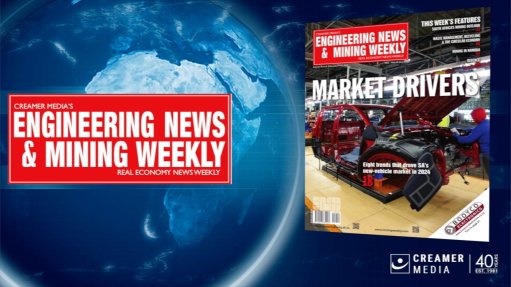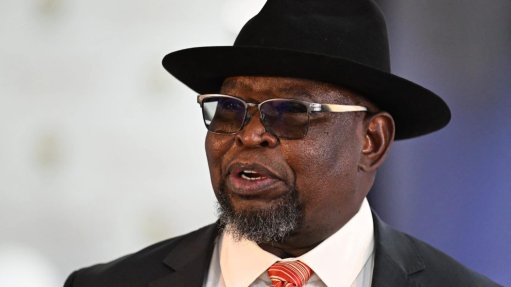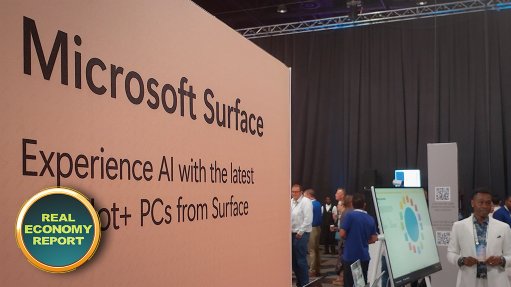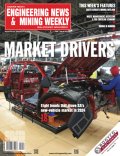On-The-Air (22/09/2017)
Every Friday morning, SAfm’s AMLive’s radio anchor Sakina Kamwendo speaks to Martin Creamer, publishing editor of Engineering News and Mining Weekly. Reported here is this Friday’s At the Coalface transcript:
Kamwendo: A London-listed company is ploughing billions of rands worth of investment into mining projects in Mpumalanga.
Creamer: It is fantastic when private sector companies are investing, particularly in mining, because the space is fraught with policy irregularities. So, those who are investing are getting a lot of applause from across the board from government, unions and all the people involved.
One of these companies is the London and Johannesburg listed Pan African Resources. They have seen fit to plough R1,7-billion into one of the projects there, which is going to turn the dumps into gold. They do it with alacrity, because they had a pilot project you can call it in Evander at the Evander Mine with the Evander tailings treatment. They paid that initial investment off in 18 months. They also produced gold at a very low cost of $390 an ounce, which means that there were great profits.
So, it has given them tremendous confidence now to plough this additional money into a bigger project called Elikhulu. This is probably going to pay for itself in four years and produce its first gold before the end of next year. It shows you how quickly you can get a return on the new form of mining that we see, mining on surface. Underground mining has created a situation where you need a long lead time and deep pockets. But to do things that are on surface is a different story.
Pan African has also got underground mines at Barberton and Evander. It has been sitting on a situation where the underground mines cost are high, but the surface production costs are low. Now it is looking by the time this Elikhulu comes through, they will probably be producing at a rate of 250 000 ounces a year, but at a very good cost below the $900 an ounce mark.
That shows you that if you combine the surface operations with the underground operations, the cheaper with the more expensive, you can end up with a nice mix that is really mouthwatering for investors. We see that the investment raised in London and Johannesburg with alacrity, the shareholders came through putting in the dollars and the banks came through putting in the debt. It gives a lot of confidence to Pan African to also go underground to see them with quite a few vibrant ideas to do more underground at Evander. They want to revive the 7 Shaft.
We see that the 7 Shaft is totally under utilised at the moment, it is just hoisting rock, which comes really from 8 Shaft and transport about 14 km. They are saying now if we can dewater that area and do some repairs to the shaft, we can start mining at that shaft the pillars and doing vamping. At the same time they have drilled a hole down 2 km and found that there is a 2010 pay shoot prospect there, which is very good nice grade.
They are completing feasibility study on that, which means that they will put additional investment into that and revive. In Barberton, they are also going to decongest the Fairview mine which arguably carries the richest grade in the world, so they can also then turn that to positive account. So, underground and surface working well.
Kamwendo: Electric buses that have no option but to make use of South Africa’s platinum are the next big thing.
Creamer: We have heard a lot about electric cars and we know there that platinum is being largely sidelined except with fuel cell electric vehicles. But, now buses, you can’t sideline the platinum, these bigger transporters have to make use of platinum when it turns to an electric vehicle. It has got to be a fuel cell electric vehicle.
We know that the Germans came out here in February and they said to the South Africans we have got the experience in this, we have already got buses running in Stuttgart, Berlin and Hamburg. You have got the platinum, let’s work together. This has resulted in a situation where next month we will have a lot of people in our metros going over to Germany to have a look at these buses and trains.
Metros from Tshwane, Johannesburg, Ekurhuleni and Nelson Mandela Bay, they will take a look at these, because one of the big things with buses is that you need the hydrogen fueling situations there is a central depot. You can have a central hydrogen depot fairly easily where these buses can refill at these depots at a central point.
That quickly brings in the economics. We know that China in the first five months of this year have ordered something like 18 000 fuel cell buses and light delivery vehicles. We can see that China is again looking at this whole idea of the hydrogen age which really suits South Africa much better than some of the electric vehicles we are seeing, like the smaller ones in America. We will deal with the bigger ones and the cascade down and take the whole market, I hope.
Kamwendo: South Africa is still at sixes and sevens as hundreds of thousands of retired people lose out on billions of rands in unpaid retirement benefits.
Creamer: We started talking about this in 2014 and started with the mining industry, because they were chasing these people because there is R3,5-billion outstanding and 300 000 miners that haven’t been paid. We still have a situation where many of them haven’t been paid, but what the Chamber of Mines brought out last week in a statement is that this is a far bigger problem.
If you look at the whole of South Africa, we are talking about R45-billion that hasn’t been paid out to something like 3-million people. Bobby Godsell said when he addressed the Mining Indaba in 2015 he said get those trustees, both management and unions, they are responsible, put them in jail and then you will see some quick returns.
We are not seeing anything quick with this, it is still dragging on with enormous amounts owed and people lining up quickly but not getting paid.
Kamwendo: There is a story to be done there, because there is quite a few people that are signing people up for surpluses and some of these retirement benefits all over the show. I’m thinking maybe we should look into that further.
Thanks very much. Martin Creamer is publishing editor of Engineering News and Mining Weekly.
Comments
Press Office
Announcements
What's On
Subscribe to improve your user experience...
Option 1 (equivalent of R125 a month):
Receive a weekly copy of Creamer Media's Engineering News & Mining Weekly magazine
(print copy for those in South Africa and e-magazine for those outside of South Africa)
Receive daily email newsletters
Access to full search results
Access archive of magazine back copies
Access to Projects in Progress
Access to ONE Research Report of your choice in PDF format
Option 2 (equivalent of R375 a month):
All benefits from Option 1
PLUS
Access to Creamer Media's Research Channel Africa for ALL Research Reports, in PDF format, on various industrial and mining sectors
including Electricity; Water; Energy Transition; Hydrogen; Roads, Rail and Ports; Coal; Gold; Platinum; Battery Metals; etc.
Already a subscriber?
Forgotten your password?
Receive weekly copy of Creamer Media's Engineering News & Mining Weekly magazine (print copy for those in South Africa and e-magazine for those outside of South Africa)
➕
Recieve daily email newsletters
➕
Access to full search results
➕
Access archive of magazine back copies
➕
Access to Projects in Progress
➕
Access to ONE Research Report of your choice in PDF format
RESEARCH CHANNEL AFRICA
R4500 (equivalent of R375 a month)
SUBSCRIBEAll benefits from Option 1
➕
Access to Creamer Media's Research Channel Africa for ALL Research Reports on various industrial and mining sectors, in PDF format, including on:
Electricity
➕
Water
➕
Energy Transition
➕
Hydrogen
➕
Roads, Rail and Ports
➕
Coal
➕
Gold
➕
Platinum
➕
Battery Metals
➕
etc.
Receive all benefits from Option 1 or Option 2 delivered to numerous people at your company
➕
Multiple User names and Passwords for simultaneous log-ins
➕
Intranet integration access to all in your organisation








